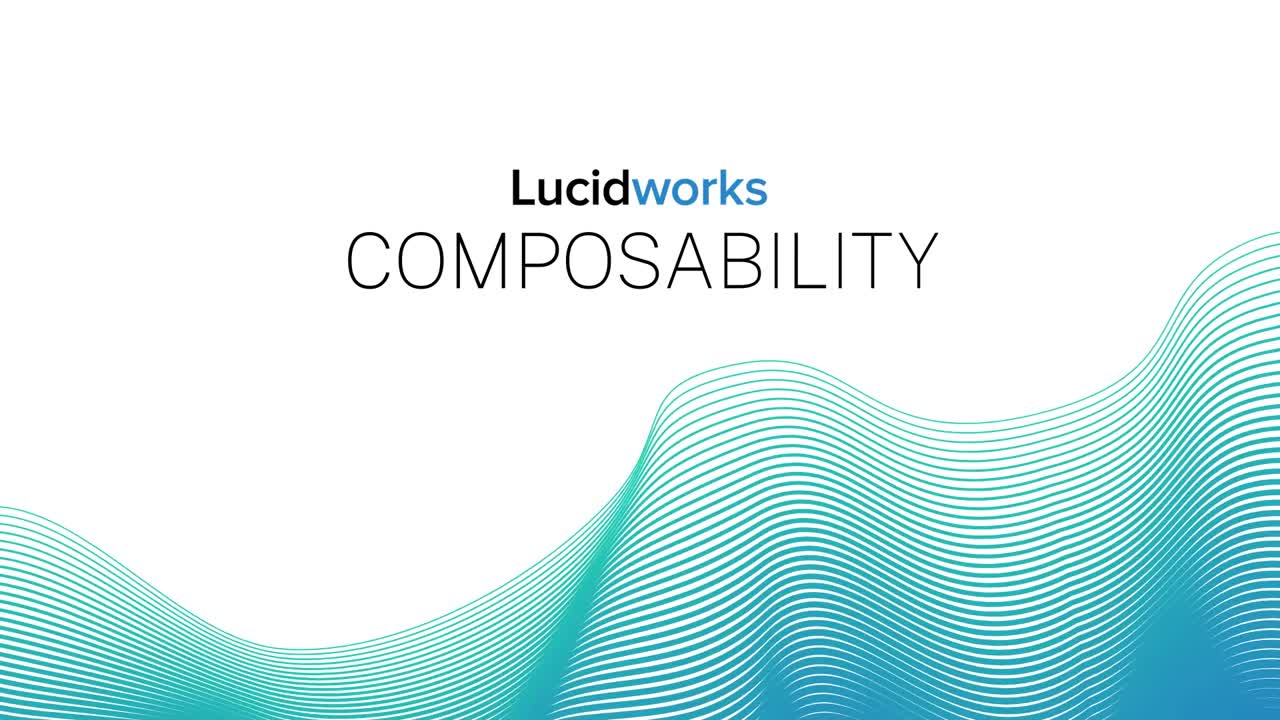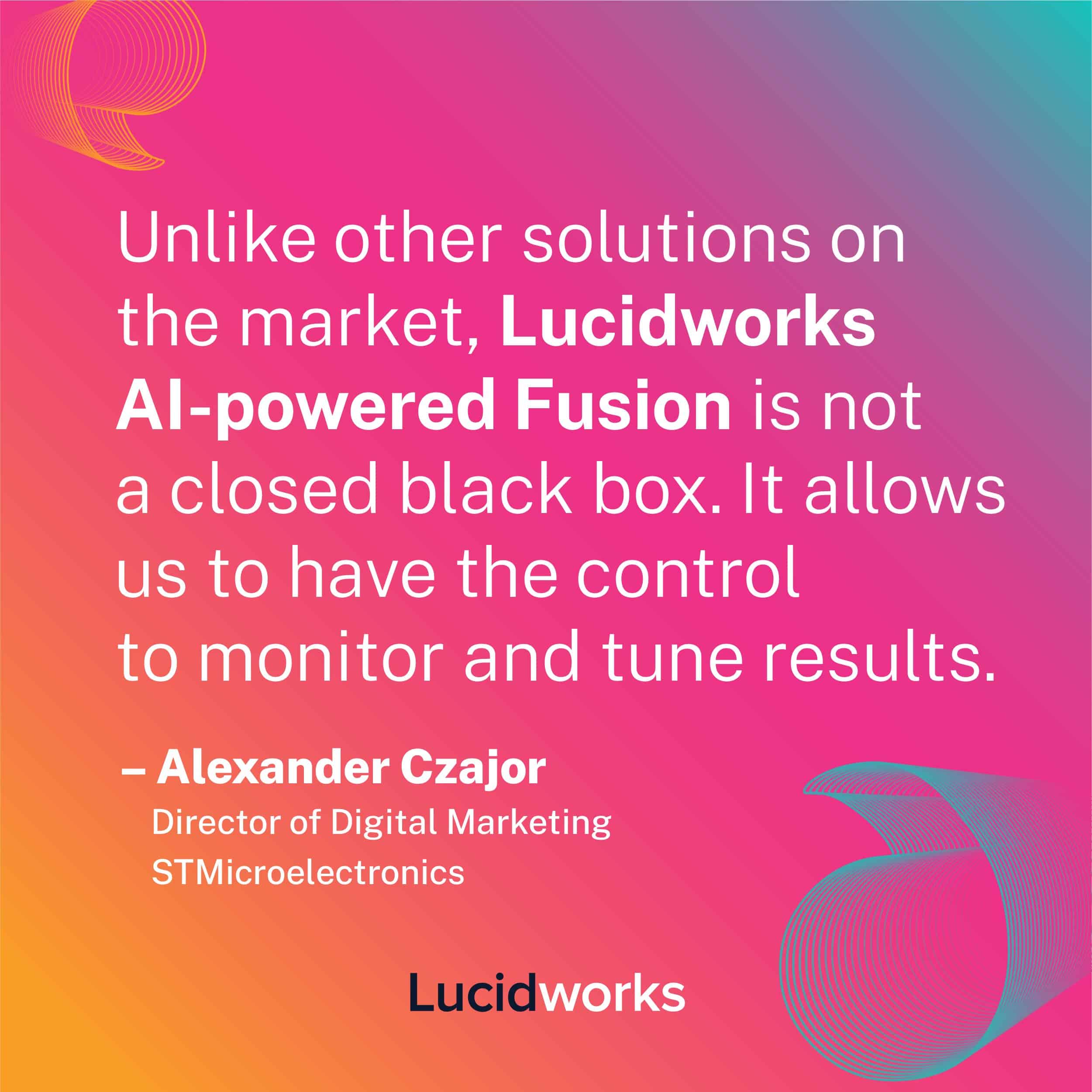The Myth of Black Box AI: Why Explainable, Configurable AI Is the Effective Alternative
Discover how composable AI is addressing the issues of black box AI. Learn why transparency and adaptability are key to future-proofing your AI strategy.

Artificial intelligence (AI) is not just a buzzword — it’s reshaping industries, driving efficiency, and delivering unprecedented insights. But did you know that 87% of business leaders (Gartner) believe AI will fundamentally change their industry within the next five years? With such high stakes, choosing the right type of AI is more important than ever.
As businesses rush to leverage AI for competitive advantage, they face a critical decision: black box AI versus configurable AI. Black box AI, while powerful and efficient, operates in a space where decision-making processes are hidden, leaving users in the dark and raising concerns about accountability and compliance. With regulations tightening and transparency becoming a demand rather than a luxury, these hidden processes can pose serious risks.
In contrast, configurable and explainable AI offers a clear view into how decisions are made. It not only supports regulatory compliance but also builds trust by making AI’s workings understandable and adjustable. This transparency allows businesses to customize models to fit specific needs, ensuring they get the most reliable and adaptable solutions.
In this blog, we’ll explore the contrasting worlds of black box and explainable AI. We’ll get into why explainable AI is not just a trend but a critical tool for ensuring transparency, compliance, and long-term value in your AI investments. Keep reading to uncover why explainable AI might just be the game-changer your business needs.
The Black Box Myth: A Double-Edged Sword
Imagine you’re trying to solve a puzzle, but the pieces are hidden inside a sealed box. You can see the finished image on the outside, but you have no idea how the pieces fit together. This is essentially what black box AI is like.

What Is Black Box AI?
Black box AI systems operate like a high-tech magician’s trick: they deliver results without revealing how they got there. Think of it as a sophisticated algorithm that offers predictions or decisions, but leaves you in the dark about the “how” and “why” behind those outcomes. It’s like getting a beautifully wrapped gift but not being able to peek inside to see how it was assembled.
The Appeal: Quick and Easy
The charm of black box AI lies in its simplicity. These systems can be set up and start delivering results almost immediately. For businesses, this means quick wins and an easy entry into the world of AI without needing deep technical know-how. Similar to ordering a ready-made meal: convenient, fast, and requires minimal preparation.
The Hidden Costs: Challenges and Risks
However, this convenience comes at a price. Let’s unpack the hidden costs:
- Lack of Transparency: With black box AI, you’re flying blind. You get the answers, but you don’t understand the reasoning behind them. This can breed mistrust, especially if the results are unexpected or controversial. Imagine receiving a medical diagnosis without knowing how it was reached — wouldn’t you want to understand the reasoning?
- Bias and Ethical Concerns: Without insight into the decision-making process, spotting and correcting biases becomes nearly impossible. This is particularly troubling in sensitive areas like finance or healthcare, where biased AI decisions can have serious consequences. Or take this example: if your Uber driver refuses to explain their route, trusting them becomes a gamble.
- Rigidity in Adaptation: Black box AI systems can be inflexible, making it tough to adapt them to specific or changing business needs. Businesses evolve, and so should their tools. But if your AI is a rigid, opaque system, it’s like trying to fit a square peg into a round hole — frustrating and inefficient.
So, while black box AI offers ease and speed, it’s very much worth weighing the benefits against the potential risks and limitations. Understanding these factors will help you make more informed decisions about integrating AI into your business strategy.
Explainable AI & The Path to Trust and Value
Here’s the thing: Not all AI systems are created equal. Explainable AI, which often means it’s configurable AI, stands out because it pulls back the curtain on the “magic” behind the technology. Unlike black-box AI, which keeps its decision-making processes shrouded in mystery, explainable AI offers a clear view into how decisions are made. It’s like having a window into the AI’s thought process — this is the transparency that explainable AI provides.
Why Explainable AI Matters
- Understanding & Trust with Clear Reasoning: Explainable AI allows you to follow the logical trail of how decisions are reached. If a detective lays out evidence to solve a case, this clarity enables stakeholders to see how conclusions are drawn. It builds confidence, fosters trust, and ensures that everyone is on the same page, reducing skepticism and the risk of hidden biases.
- Adaptability & Flexibility for Tailored Solutions: No two businesses are identical, and as market conditions shift, so do business needs. Explainable AI is designed to adapt, allowing companies to tweak and refine their AI systems. Think of it as having a custom-fit suit — adjustments can be made to ensure a perfect fit, keeping your AI solutions relevant and effective as your business evolves.
- Compliance & Accountability for Regulatory Ease: In heavily regulated industries like finance and healthcare, transparency is not just a nice-to-have; it’s a necessity. Explainable AI simplifies compliance by providing detailed insights into decision-making processes, which helps meet regulatory requirements and maintain accountability.
Read more: Learn how Northwell Health improved search relevancy for patients across 20+ microsites and 13k+ physician profiles.
Real-World Impact of Explainable AI
Finance
Consider a bank that uses explainable AI for fraud detection. By continuously updating its models based on emerging fraud patterns, the bank not only enhances its ability to catch fraud but also maintains transparency for auditors. This ongoing adaptability ensures that the bank meets regulatory standards while safeguarding customer trust.
Healthcare
A healthcare provider uses explainable AI to craft personalized treatment plans. By understanding the rationale behind AI recommendations, doctors can trust and tailor treatments to individual patients. As new medical research comes in, the AI’s flexibility allows for swift updates, keeping patient care at the cutting edge.
B2B Commerce
Imagine a manufacturing company that relies on explainable AI to streamline its supply chain. The system’s transparency highlights inefficiencies and helps the company make informed adjustments. As market conditions shift, the AI’s adaptability ensures that the supply chain remains agile and responsive to new challenges.
In a nutshell, explainable AI isn’t just about demystifying technology. It’s actually essential for creating a more transparent, adaptable, and compliant future.
Composability and Your Tech Stack
If you’re building a high-performance race car, you want to be able to swap out parts whenever you need — and have the toolkit to make that happen. This is the essence of composable architecture — a modular approach where each component can be independently developed, deployed, and customized. This bespoke tech stack means every piece fits perfectly into your unique operational puzzle.

3 Reasons Why a Composable Tech Stack is a Game-Changer
1. Customization: Your AI, Your Way
In a world where one-size-fits-all doesn’t cut it, composability shines. Take this example: You’re launching a new product and need specific AI capabilities to track customer sentiment. With a composable tech stack, you can seamlessly integrate specialized AI models or modules tailored to this need, ensuring that the solution is as unique as your challenge. This level of customization helps you stay ahead of competitors and adapt to market demands swiftly.
2. Integration: Seamless Synergy with Existing Systems
A composable architecture isn’t about starting from scratch; it’s about enhancing what you already have. Imagine upgrading your old but reliable engine with state-of-the-art technology — this is what composable AI does for your existing IT infrastructure. It integrates smoothly with your current systems, leveraging past investments while boosting functionality. This approach minimizes disruption, accelerates deployment, and creates a cohesive technological ecosystem.
3. Future-Proofing: Staying Ahead of the Curve
The tech landscape is always shifting, and your systems should be ready to evolve with it. Composable architecture is like having a tech stack with interchangeable parts, making it easy to adapt to new technologies or changing business needs. Suppose a breakthrough in AI emerges — rather than overhauling your entire system, you can simply swap in new components. This adaptability ensures that your tech stack remains cutting-edge and aligned with future innovations, offering sustained value.
Lucidworks’ Approach: A Case Study in Action
Customer Story: STMicroelectronics
Imagine navigating a maze where every twist and turn is designed for someone else’s needs — this was the reality for STMicroelectronics, a global powerhouse in semiconductor technologies. Their existing search system was like a narrow, product-focused hallway, failing to meet the diverse and evolving needs of their customers at various stages of their buying journey. While seasoned users could find their way, new customers often felt lost, struggling with an outdated, product-centric search experience.
Enter Lucidworks. STMicroelectronics was on a quest for a solution that could transform their search experience into one that was truly customer-centric. After a thorough evaluation of various options, Lucidworks emerged as the clear choice. Why? Because Lucidworks offered not just an AI solution, but a transparent and configurable platform that could be customized to fit ST’s unique needs.
Alexander Czajor, Director of Digital Marketing at STMicroelectronics, put it succinctly: “Unlike other solutions on the market, Lucidworks’ AI-powered platform isn’t a closed black box. We have the control to monitor and fine-tune results — something that is critically important to us.”

With Lucidworks, STMicroelectronics gained the ability to manage and optimize their search experience. Lucidworks’ approach, which focuses on supporting different personas and designing intent-based experiences, allowed ST to handle distributed, unstructured, and legacy data effortlessly. This collaboration set ST up to deliver a next-generation B2B customer journey, positioning them for success in 2024 and beyond.
Lucidworks’ Commitment: Transparency and Configurability at the Core
At Lucidworks, transparency and configurability aren’t just features — they’re foundational principles. Our platform goes beyond offering AI solutions. How? It provides clarity and control, ensuring that businesses not only understand how AI decisions are made but can also customize these processes to fit their needs.
Why Transparency Matters
Transparency in AI is crucial for several reasons. First and foremost, it builds trust. When users and stakeholders can see and understand how AI arrives at its conclusions, they gain confidence in the system’s decisions. This clarity is essential for fostering a positive relationship between the technology and its users.
Additionally, transparency ensures compliance with industry regulations and standards. Clear and understandable AI processes make it simpler to adhere to these requirements, as businesses can more easily demonstrate that their AI systems operate within established guidelines. By prioritizing transparency, companies not only enhance trust but also streamline their compliance efforts, making their AI implementations more robust and reliable.
Key Features of the Lucidworks Platform:
- Lucidworks AI: Our cutting-edge AI orchestration engine offers robust explainability and customization options, granting organizations control over their AI digital experiences.
- Advanced Search Capabilities: Customize search algorithms to align perfectly with your business goals. Think of it as fine-tuning a high-performance engine to get the best results.
- Data Connectors and Integrations: Seamlessly integrate with your existing IT infrastructure. It’s like adding new tools to a well-oiled machine, enhancing its capabilities without disrupting operations.

Build Your Personalized Checklist of AI Capabilities
We’ve unpacked the significant drawbacks of black box AI, from its lack of transparency to its rigid, biased nature. In contrast, configurable AI offers a world of advantages — explainability, adaptability, and compliance, all tailored to meet your specific business needs.
Curious about how AI can enhance your digital experiences at large? Try Lucidworks’ Search Path tool to explore how advanced capabilities can drive your success. Build your capabilities checklist with our interactive tool and start your journey towards a more effective and engaging digital strategy.
Best of the Month. Straight to Your Inbox!
Dive into the best content with our monthly Roundup Newsletter!
Each month, we handpick the top stories, insights, and updates to keep you in the know.